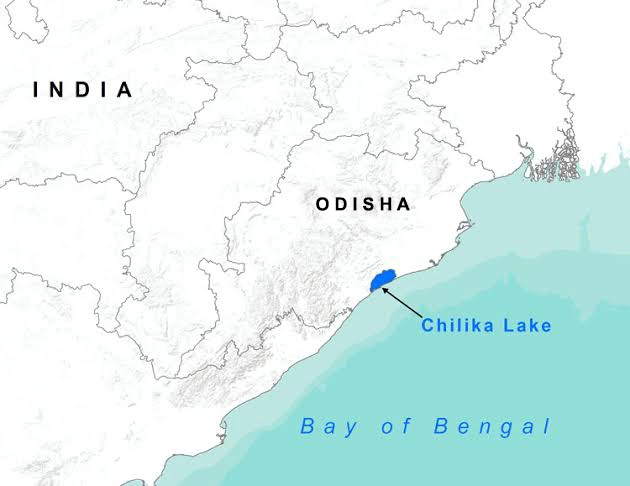Biodiversity & Environment
Fishing Cats
- 06 Jun 2022
- 5 min read
For Prelims: Fishing Cat Project, Chilika Lake, IUCN, CITES
For Mains: Conservation, Biodiversity and Environment
Why in News?
According to a census conducted by Chilika Development Authority, the Chilika Lake has 176 Fishing Cats.
- The Census was conducted in Collaboration with The Fishing Cat Project (TFCP). This is the world’s first population estimation of the fishing cat, which has been conducted outside the protected area network.
- Spatially Explicit Capture Recapture (SECR) method was used to analyze the data. SECR is used to estimate the density of an animal population from capture–recapture data collected using an array of 'detectors'.
What are Fishing Cats?
- Scientific Name: Prionailurus viverrinus.
- Description:
- It is twice the size of a house cat.
- The fishing cat is nocturnal (active at night) and apart from fish also preys on frogs, crustaceans, snakes, birds, and scavenges on carcasses of larger animals.
- The species breed all year round.
- They spend most of their lives in areas of dense vegetation close to water bodies and are excellent swimmers.
- Habitat:
- Fishing cats have a patchy distribution along the Eastern Ghats. They abound in estuarine floodplains, tidal mangrove forests and also inland freshwater habitats.
- Apart from Sundarbans in West Bengal and Bangladesh, fishing cats inhabit the Chilika lagoon and surrounding wetlands in Odisha, Coringa and Krishna mangroves in Andhra Pradesh.
- Threats:
- Habitat Destruction: A major threat for fishing cats is the destruction of wetlands, their preferred habitat.
- Shrimp Farming: Shrimp farming is another growing threat to mangrove habitats of the Fishing Cat.
- Hunting: This unique cat also faces threats from hunting for meat and skin.
- Ritual Practices: Tribal hunters indulge in ritual hunting practices throughout the year.
- Poaching: It is also occasionally poached for its skin.
- Poisoning: Indiscriminate trapping, snaring and poisoning.
- Protection Status:
- IUCN Red List: Vulnerable. Despite multiple threats, the Fishing Cat was recently downlisted to “Vulnerable” from “Endangered” in the IUCN Red List species assessment.
- CITES: Appendix II
- Indian Wildlife Protection Act, 1972: Schedule I
- Conservation Efforts:
- Earlier, Chilika Development Authority had declared its intent to adopt a five year action plan for fishing cat conservation in Chilika.
- In 2021, the Fishing Cat Conservation Alliance initiated a study of the bio-geographical distribution of the fishing cat in the unprotected and human-dominated landscapes of the northeastern Ghats of Andhra Pradesh.
- The Fishing Cat Project, launched in 2010 started raising awareness about the Cat in West Bengal.
- In 2012, the West Bengal government officially declared the Fishing Cat as the State Animal and the Calcutta Zoo has two big enclosures dedicated to them.
- In Odisha, many NGOs and wildlife conservation Societies are involved in Fishing Cat research and conservation work.
WHat are the Key Points of Chilika Lake?
- Chilika is Asia's largest and world's second largest lagoon.
- In 1981, Chilika Lake was designated the first Indian wetland of international importance under the Ramsar Convention.
- Major attraction at Chilika is Irrawaddy dolphins which are often spotted off Satapada Island.
- The large Nalabana Island (Forest of Reeds) covering about 16 sq km in the lagoon area was declared a bird sanctuary in 1987.
- Kalijai Temple - Located on an island in the Chilika Lake.
- Chilika lake hosts birds migrating from thousands of miles away from the Caspian Sea, Lake Baikal, Aral Sea, remote parts of Russia, Kirghiz steppes of Mongolia, Central and South East Asia, Ladakh and the Himalayas.
- The birds find the vast mud-field and abundant fish stock here suitable to congregate.








